Shooters are pouring a ton of attention onto the market’s “new hotness” in early 2020 – the 5.7×28 cartridge. As Ruger works to get tons of their new Model 57 pistols to the market, most of us are intrigued. But as the buzz continues to percolate, it got us wondering what we should expect from the relatively unknown caliber. Mostly, how does it stack up to the old guard – 9×19? Let’s assess both options in this 5.7×28 vs. 9mm debate.
5.7×28’s Introduction to the World
In the early 1980s, NATO asked ammunition manufacturers for a round with better range, accuracy, and terminal performance than the standard 9mm. The organization would implement this round in a new class of firearms called “personal defense weapons” — essentially compact, selective fire submachine guns.
FN Herstal went to the drawing board, and in 1990 introduced 5.7x28mm. It was unconventional with its 23 grain plastic core bullet. Even a squirrel hunting round has nearly double that weight. But with its 2,800 fps muzzle velocity, that bullet delivered an exceptionally flat trajectory and 400 ft lbs muzzle energy. To top it off, the 5.7×28 produced very little recoil.
FN eventually introduced two weapons to go along with their new cartridge: the FN P90 in 1991 (PS90 for civilians), and the Five-seveN pistol in 2000. They had to wait for NATO to declare the 5.7×28 effective, but their patience paid off in 2006 when forty countries began using the cartridge for law enforcement, including the U.S.
NATO’s Evaluation of 5.7 vs. 9mm
When NATO evaluated the 5.7×28, they naturally compared it against the 9mm that it was meant to replace. A global panel of experts agreed that the 5.7×28 was superior beyond any doubt. They found that the new cartridge was 27 percent more effective against an unprotected target, and also less sensitive to freezing and hot weather. As a nice bonus, the 5.7×28’s design is close enough to the 5.56×45’s that the two can be manufactured with the same equipment.
But if the 5.7×28 is indeed better than the tried and true 9mm Luger, is it better enough for you to go through the trouble of replacing it?
5.7×28 vs. 9mm: Cartridge Comparison
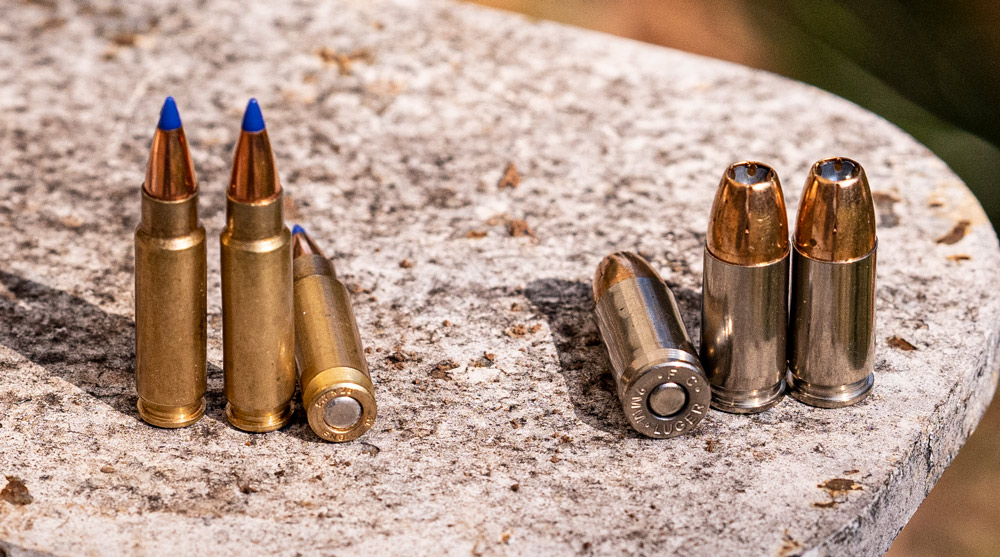
Let’s look at the 5.7×28 and the 9mm side by side. (Note that we’re using the specs from the modern SS190 incarnation of the 5.7×28.)
| 5.7x28 | 9mm Luger | |
|---|---|---|
| Case Type | Rimless Bottleneck | Rimless Tapered |
| Bullet Diameter | .224" | .355" |
| Case Length | 1.138" | .754" |
| Total Length | 1.594" | 1.169" |
| Rim Diameter | .307" | .392" |
| Case Capacity | 13.9 Grain | 13.30 Grain |
| Max Pressure | 50,038 psi | 35,000 psi |
| Muzzle Velocity | 2350 fps (31 grain bullet) | 1150 fps (124 grain bullet) |
| Muzzle Energy | 394 ft/lbs | 364 ft/lbs |
Right away two things stick out. First, the 5.7×28’s casing is bottlenecked, which helps it to chamber more easily. That alone is not enough to make a cartridge mainstream, as shown by the relatively unpopular 357 SIG. Second, the 5.7×28’s shell casing isn’t substantially narrower than the 9mm’s. As the result the standard Five-seveN magazine holds only one more round than the standard Glock 17 magazine. However, the longer length of the 5.7×28 cartridge and its greater chamber pressure both demand a larger, harder to conceal pistol.
Recoil
The 5.7×28 produces about 30 percent less recoil than the 9mm. Directing accurate, rapid fire with a Five-seveN is thus generally easier than with a comparable handgun chambered for 9mm.
But the average American can’t enjoy the 5.7×28’s low recoil at its full potential. The FN P90 fires 900 rounds per minute with very manageable recoil, but it was introduced after the NFA effectively banned newly manufactured machine guns. True automatic FN P90s exist almost exclusively in the hands of LE professionals.
Accuracy
The 5.7×28 has more than double the 9mm’s muzzle velocity — not only because it generates a higher chamber pressure, but also because its bullet weighs three quarters less. This conveys a flatter trajectory, and gives its lightweight bullet enough power to deliver more energy than the 9mm while it’s at it.
The 5.7×28’s ballistic performance is often compared to that of a 22 WMR out of a rifle. Accuracy like a gopher gun’s is a tempting perk. What you must consider is whether that greater accuracy is worthwhile out of a carry weapon. Few self-defense situations occur at distances greater than a few yards, let alone 100.
5.7×28 vs. 9mm: Terminal Performance
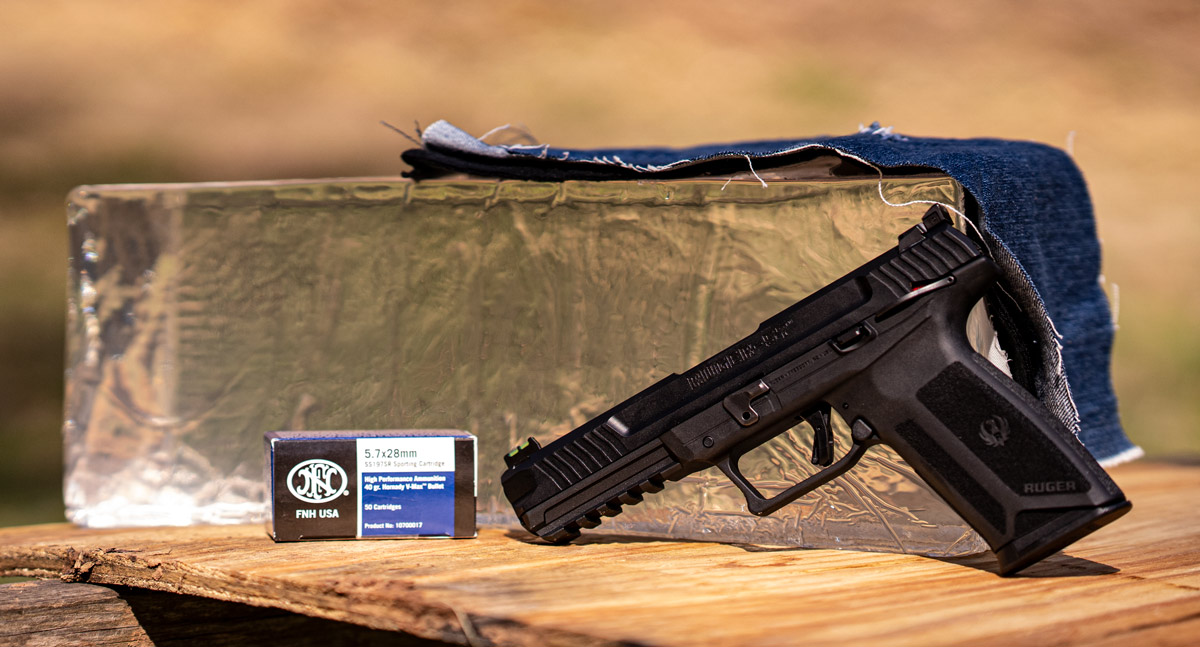
The 5.7×28 is known for its ability to penetrate body armor. This advantage is moot for the civilian shooter, because armor piercing 5.7×28 rounds are illegal in America. (At least we’re not in Australia where body armor is illegal too.)
We were curious about how 5.7×28 would do when put through the paces in some gel testing. So, we threw some rounds into Clear Ballistics gelatin with the Ruger 57 pistol. The ammo in our tests is FNH’s 40 grain V-MAX. As we all await the new Speer self-defense load, this will have to do as our “best” round available for self-defense.
Gel Test Results
All of the rounds we tested showed admirable penetration through a 4-layer cloth barrier and into gelatin. On average, we got about 15″ of penetration, which is ideal if you live by the standard set by the Federal Bureau of Investigation.
Where these rounds were lacking, however, was expansion. The bullets were tiny. In many cases, the front of the projectile bent in instead of mushrooming out. The wound channels were minuscule in the gel blocks.
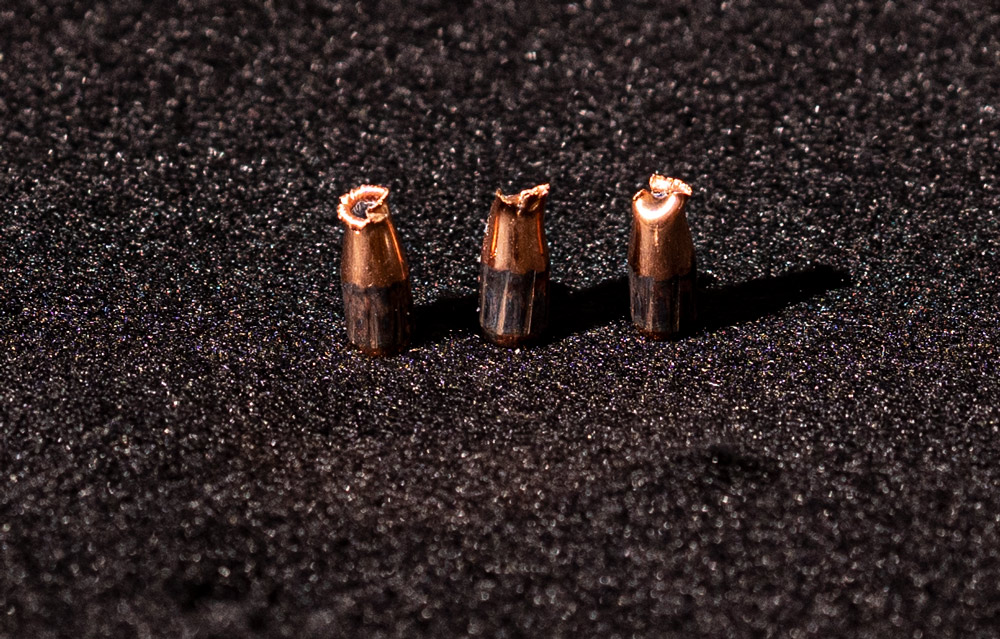
The standard 5.7×28 does still penetrate deeper than a 9mm — which is not to suggest that the 9mm is in the least bit incapable of penetrating to an depth effective for neutralizing a human target.
Firearm Selection
The 9mm is well over one century old. In that time countless firearms for it have hit the market, comprising everything from revolvers to AR-15s. If you can imagine a firearm chambered for the world’s most popular handgun cartridge, the odds are that it exists.
Firearm selection is possibly the 5.7×28’s greatest weakness. Civilians are limited to the semi-auto FN PS90, the Five-SeveN, the Ruger 57 pistol or an AR-57.
The FN P90 is unavailable to the American public, as is the only other firearm designed to chamber 5.7×28: the ST Kinetics CPW, a Singaporean submachine gun introduced in 2009 which is used by Bangladeshi SWAT teams.
The Five-seveN is by no means a low quality handgun, but if you don’t like it, too bad. And if you need parts for it you’ll have nowhere near the access you would have enjoyed if you’d bought a mainstream 9mm pistol.
The Scoreboard
If the 5.7×28 is indeed so much better than the 9mm, why didn’t it replace it? For three big reasons.
First, the 9mm has been around since 1902. Almost nine decades is a pretty serious head start to give a round in a contest of popularity.
Second, FN designed 5.7×28 specifically to facilitate rapid fire in a personal defense weapon, yet that advantage is moot so long as the NFA is in effect. Don’t hold your breath waiting for a presidential candidate to run on the platform of repealing it.
Third, while the 5.7×28 is arguably the better pistol cartridge for self-defense, it is not better enough to justify people abandoning the already ubiquitous 9mm in favor of it. This is ultimately the primary factor that kept newer rounds like 357 SIG, 10mm, and to a lesser extent 40 S&W from going mainstream. And although very old, the 9mm has developed over the years to remain competitive with more modern cartridges.
Summary
The conclusion? The 5.7×28 belongs in the FN P90, which you can’t have. Law enforcement agencies are increasingly abandoning even that weapon in favor of more powerful 5.56×45 rifles. And as far as the Five-seveN pistol is concerned, sure: You’ll get better accuracy and terminal performance than a 9mm, but the difference is not valuable enough at practical self-defense ranges.
The good news is you can keep your 9mm.

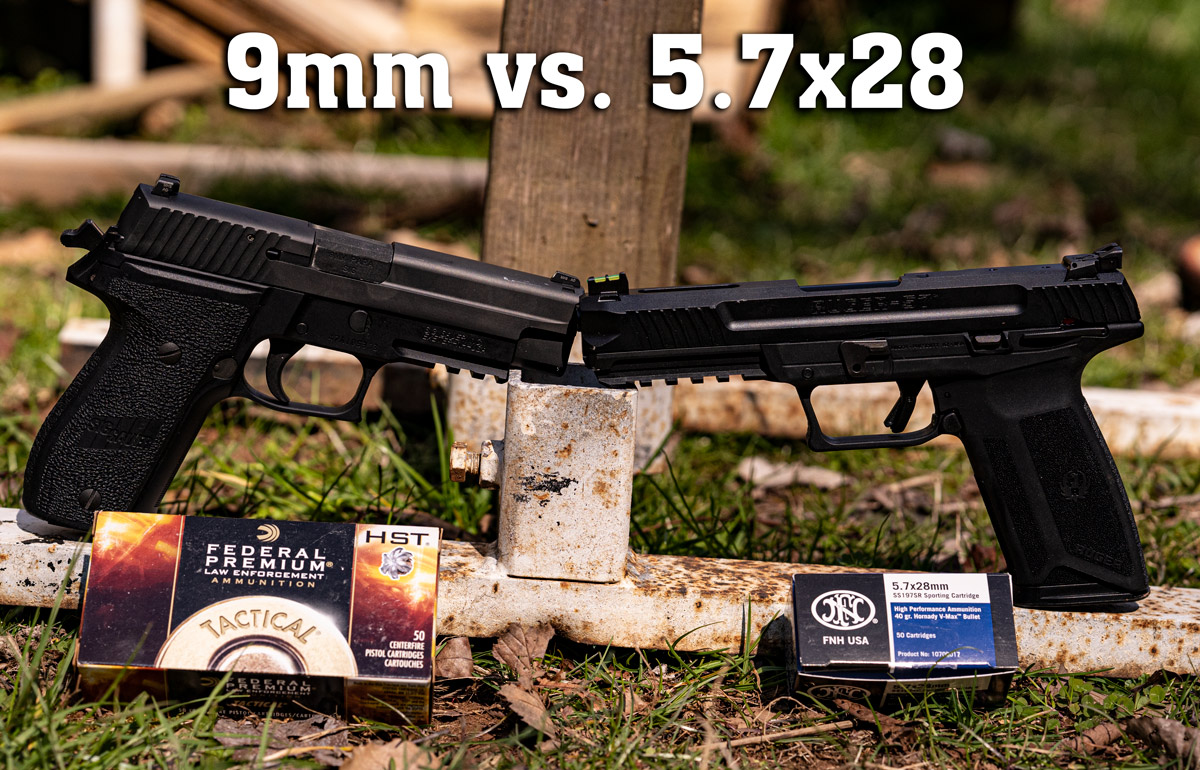
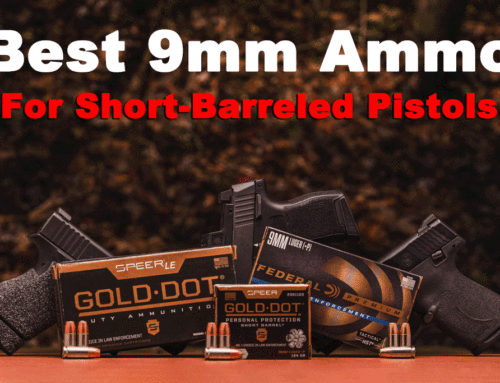
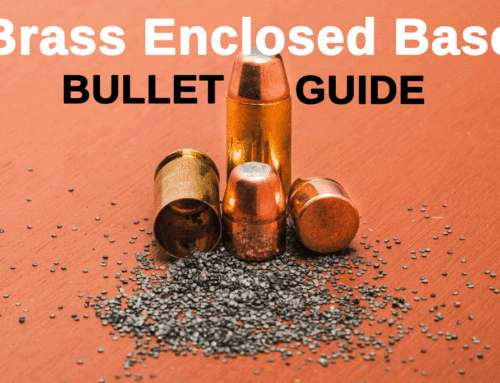
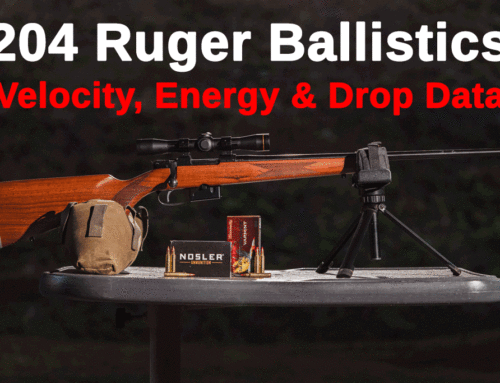
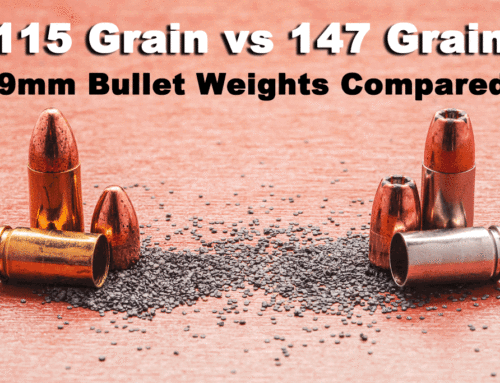
You can in fact, own the fn p90 in the US. Theyre not super uncommon. You can find them on gunbroker as well.
Andrew – are you sure you aren’t talking about the FN PS90?
The PS90 is semi-auto with a barrel that’s 6″ longer than the full-auto P90. The PS90 isn’t uncommon. The P90 is a different animal.
Yes, you can get 9mm in a hundred different brands of handguns, and 90 of those handguns are pieces of s’^*t, but you can get the 5.7 in 3 handgun brands and all 3 are pretty darn sweet.
Sure, I’ll give you that point.
The only difference between a P90 and PS90 is the barrel, stock, selector, and FCG.
The PS90 is the civilian variant of the P90, just as the AR15 is the civilian variant of the M16.
I don’t understand why you would tell people that their only 5.7×28 option is an FN-5.7.
In addition to the FN57 hamdgun, the FN PS90 & the Ruger 57 also available to civilians and are absolutely viable options for consumers…..
Thanks for the note, I think the criticism is fair. When this was initially published, Ruger’s 57 pistol was unavailable. After its release, we got our hands on one and obviously used it for the gel tests in an update that appear as part of this article. We missed a spot that should’ve been updated where we claimed the PS90 and FN FiveseveN were the only options along with the AK-57. I believe we have addressed that now.
The 5.7 is clearly better. For those that are looking for performance, the 9mm doesn’t come close. Is it rare and harder to obtain. Yes. But so are exotic cars, doesn’t mean your better off with a Toyota Camry
I mean you can clearly tell this article is heavily biased and they barely if grudgingly mention the gaping flaws in the performance of this cartridge as a defensive round. Also I could never imagine in 100 years foregoing the most ubiquitous and widely used centerfire cartridge in the world for something that has next to no adoption even if it offered some benefit which as we can tell, this doesnt
Nice article. I still bought one. 😂
I bought a M&P 6.7 by 28. The magazine holds 22 shots. As a result, 23 shots with one in the chamber. That’s 5 more than the Glock 17. Because of its unique gas operating system, recoil is less than the other models mentioned. I think you give up expansion of the bullets for speed and accuracy . You could turn a man’s face or chest nto a callander . My target reminds me of Swiss cheese. It loads easy, it shoots accurately with little recoil. If you are sensitive to recoil, it might make an alternative to other calipers. Old people might take a shine to it.
OLD PEOPLE? Watch it now. You are supposed to call us elderly at the worse. But I like what I have read about the 5.7X28 mm. My wife wants something that is easy to load easy to cock and the less recoil is a great thing in any pistol. Still looking for the right carry weapon for me. May go to a good 410 gage pistol and use buck shot in it.
So far, the only knocks against the 5.7 are selection of guns chambered for it and price of ammunition (which is coming down). 9mm fans always bring up “improvements in ammunition technology” but that is akin to saying today’s 4 cylinder engines produce as much horsepower as V8’s from 20 years ago. Improvements apply to all calibers, not just 9×19. If you want to see 5.7 adopted on a large scale, wait until Glock stops reinventing 9mm platforms and offers one.
I own several 9mm hand guns and also the FN PS90 that I bought when my local dealer first got one. I recently bought the Ruger57 it is one sweet pistol and very accurate. I had a friend work it over for me as he is a gunsmith and does an excellent job on all of my firearms. Only down fall I can see in the 57 to my 9mm weapons is cost of ammunition. Other than that the 57X28 well out performs the 9mm.